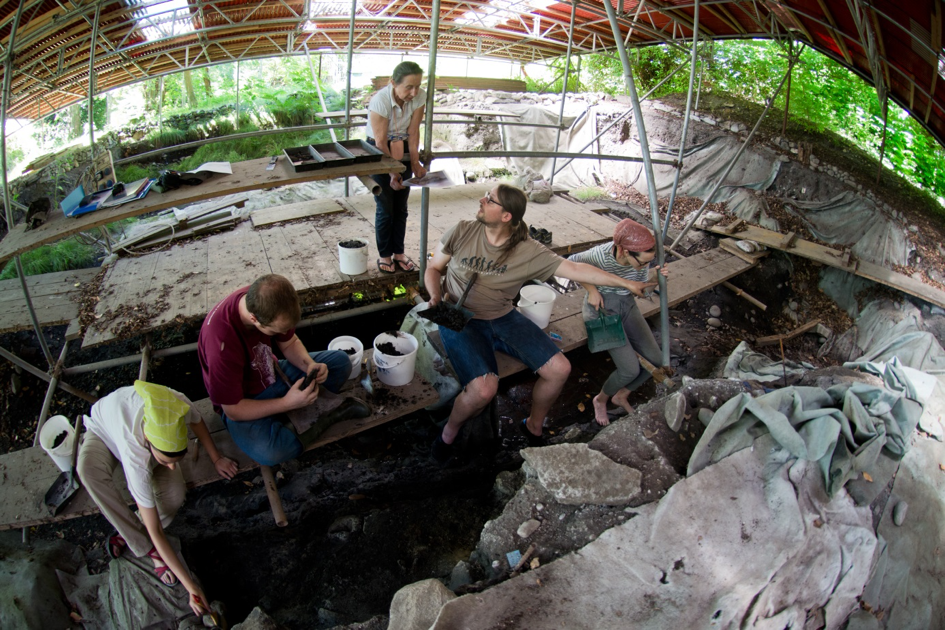Agriculture and climate in the first pile-dwelling site of the Circumalpine area
Isolino Virginia is a small island on the western shore of Lake Varese (southern Alps, Italy). Up to 4 m of archaeological deposits have accumulated in ca. 4000 years, turning it into a sort of waterlogged tell site. It is a UNESCO World Heritage site and the earliest pile-dwelling site documented in the Circumalpine area. Occupation phases between 5000 and 3700 BC have been documented, with excellent preservation conditions for charred and uncharred plant remains. Investigations undertaken to date involve seed, insect, and charcoal remains found in several of the sediment cores extracted in 2018.

The well preserved waterlogged plant remains provide an excellent basis for the reconstruction of the economy in the Neolithic, which is particularly pleasing since quantified archaeobotanical data is still sparse for Northern Italy. The results obtained so far, strongly indicate that naked wheat and naked barley were the main crops during the 5th millennium BC, but that a shift to glume wheat took place after 4000 BC as can be observed in other Mediterranean sites, e. g. Les Bagnoles in southern France.
Investigations of the site are carried out as part of the Groundcheck Project (Deutsches Archäologisches Institut) and the AgriChange Project (Swiss National Science Foundation). The most important research question is if the climate was a driving factor for early farmers in a long-lived settlement to change their agricultural system (change of the main cereal crops or their management). Therefore the resilience of early farming practices to climatic variability needs to be observed. More specifically, the suitability of durum wheat (the type of naked wheat that is nowadays used to make pasta and that was the most important crop in the first pile dwellings north of the Alps) to the wet climate of the Italian Alpine foothills is a decisive factor that is to be investigated.




Project members and partners
Ferran Antolín (Projectmanagement)
Franziska Follmann
Raul Soteras
Daria Banchieri (Independent Researcher)
Stefano Bernasconi (ETH Zürich)
Simone Häberle (Uni Basel)
Irka Hajdas (ETH Zürich)
Martin Mainberger (UwArc)
Héctor Martínez-Grau (Uni Basel)
Raquel Piqué (Universitat Autònoma de Barcelona)
Marguerita Schäfer (Uni Basel)
Bigna L. Steiner (Uni Basel)
